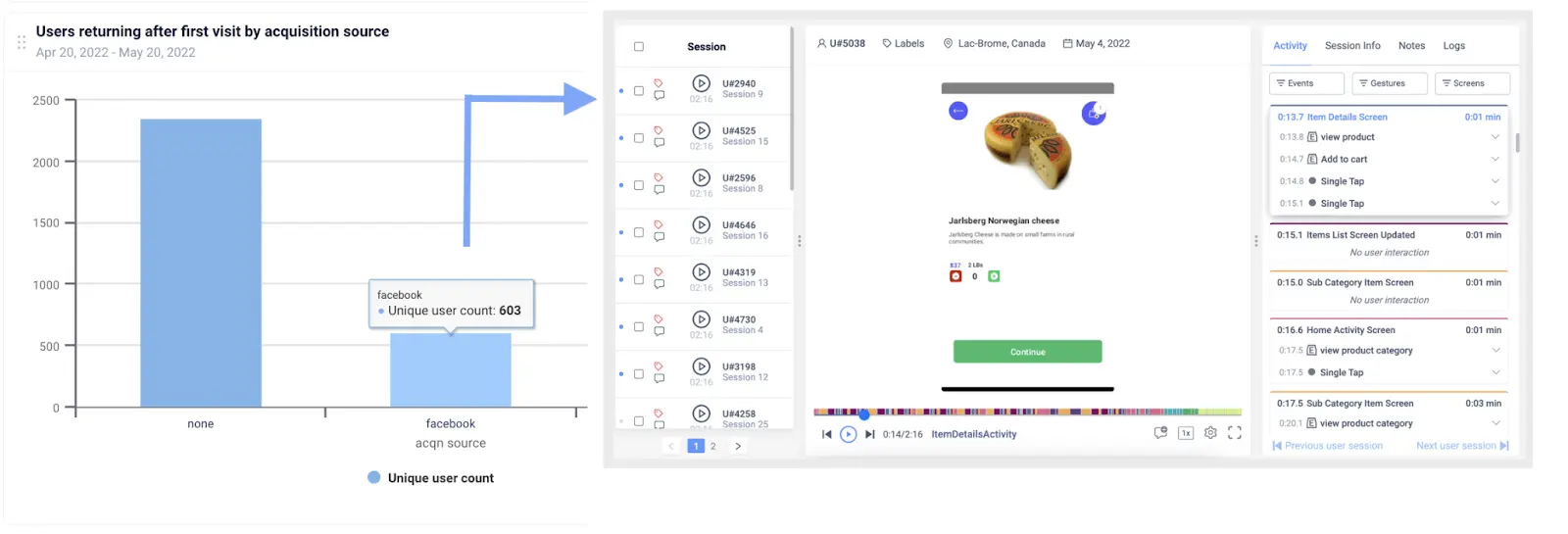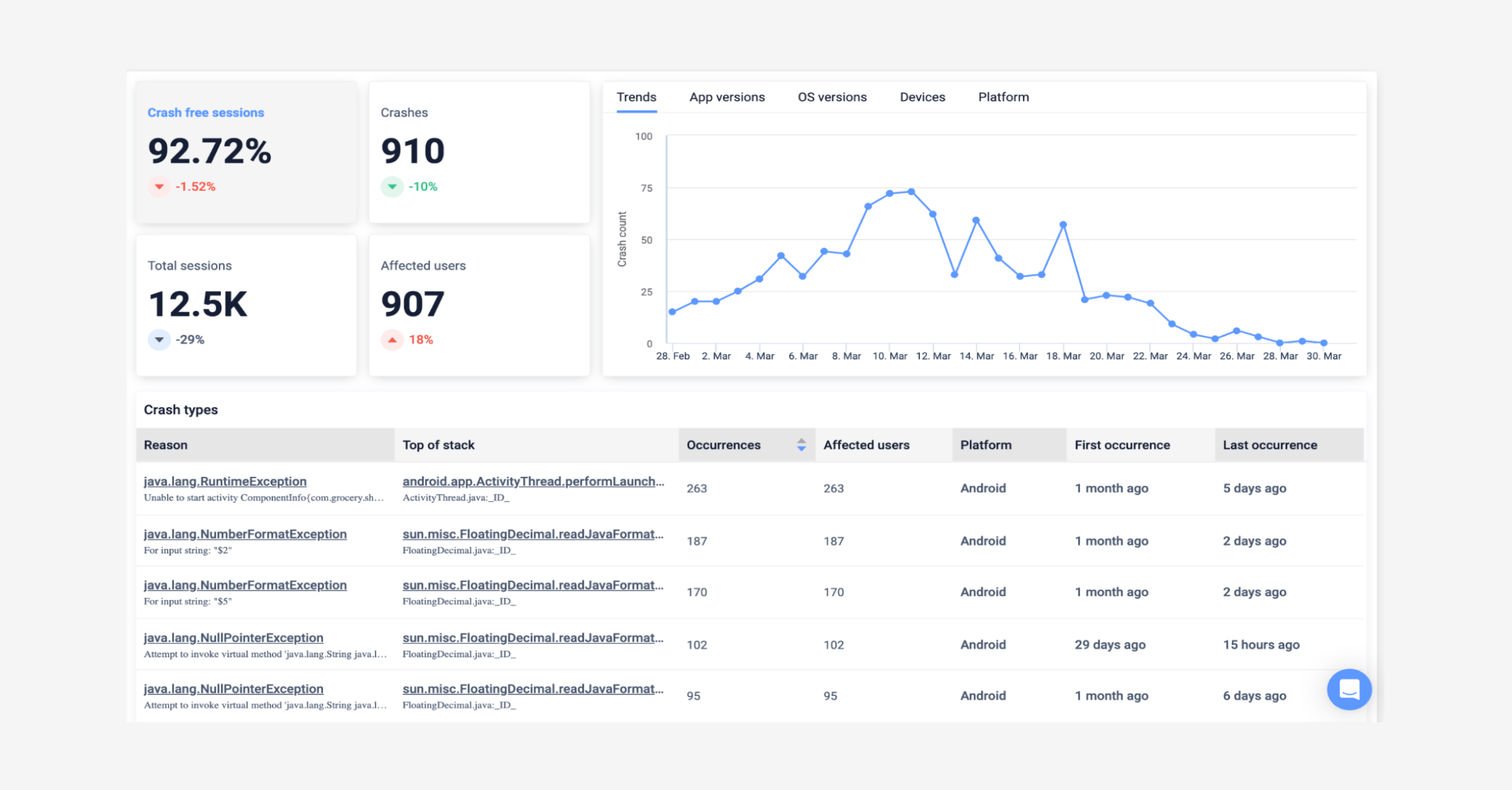Back to blog
5 MIN READ
Product-Market Fit Framework - How to Enhance Product Appeal
PUBLISHED
16 November, 2023

Product Analytics Expert
The product-market fit is the sweet spot where a product aligns perfectly with the needs and desires of your target customer and generates sustainable customer value. Finding it is every product manager’s goal.
At UXCam, we know how tricky it can be to match your product’s value with your customer’s ever-evolving preferences and demands. But with an in-depth understanding of who they are, half of the product-market fit battle is already won.
This article discusses the product-market fit framework—what it is and how to implement it to convert more customers.
What is the product-market fit framework?
The product-market fit framework (PMF) is a systematic approach to finding the sweet spot between a product’s value and its target customer.
Let’s break that down a bit further.
Customers have a laundry list of needs and wants. Your product becomes valuable when it satisfies some (or all) of these needs and wants. Seems simple enough, right? Well, there are a few variables:
Pricing: It’s important to price your product correctly to make sure that customers are getting the value they expect. Too low, and you won’t make a profit. Too high, and customers will seek an alternative that offers more value for less.
Features: You need to decide which features your product should have (and which ones it shouldn’t). You can’t build everything, so the key here is distinguishing between your market’s “must-haves” and “nice-to-haves”. People generally prefer products that do a few things very well, rather than many things poorly.
Positioning: Positioning is about targeting the right people with the right message through the right channels at the right time. It’s a critical equation that's based on understanding your customer and the competitive landscape.
Imagine these three elements like levers. You need to make data-driven adjustments to each to get the optimal result—too much movement in one direction, and you’ll end up with an imbalance.
For a real-world example, consider JobNimbus.

High churn and low app store ratings were the symptoms of JobNimbus’s poor product-market fit. To find their fit, they used UXCam to monitor user behavior and rebuilt the app from scratch so that it actually solved user problems.
This data-driven approach led to an increase in App Store rating from 2.5 stars to 4.8 stars.
Benefits of the product-market fit framework
Here are some of the main advantages you’ll gain by following the product-market fit framework:
User-centric solution development: It allows you to understand your target customer's needs, preferences, and pain points. The user and market research required enables teams to develop user-centric solutions.
Increased user adoption and business growth: Achieve product-market fit results and higher user adoption rates. More people will be interested in trying and using your product, resulting in an increased user base and business growth.
Increased user satisfaction and engagement: When your product effectively meets your target customer’s needs, they receive a compelling user experience. You’ll enhance engagement and ultimately create more loyal customers through a product that resonates.
Business sustainability and competitive advantage: Following the framework creates a strong foundation for sustainable business growth. Your unique and differentiated product will stand out and increase your chances of attaining long-term success. You can attract investors and create a competitive market advantage through faster innovation.
How to implement the product-market fit framework
Step 1 - Identify and define your target audience
Knowing your customer’s identity is key to building a product they’ll love.
If you have an existing user base, your best bet is to use a product analytic tool like UXCam to track user behavior and usage trends within your product. This will give you a clear idea of who is using your product and how they’re using it (which allows you to make educated guesses about why they’re using it).
If you don’t have an existing user base, you’ll start with market research and competitor analysis to build an initial user persona. This will carry you until you’ve grown your user base to a size where you can track user behavior with an analytics tool.
Step 2 - Understand customer needs
Developing an understanding of your target audience doesn’t stop after creating a persona. It’s an activity that should be revisited throughout the entire product lifecycle. Conduct more research to better understand your customer’s unmet needs and challenges. Collect feedback from them through surveys and interviews.
Additionally, analyze their behavior to learn usage patterns, common actions, and areas for improvement.

UXCam acts as a single source of truth for mobile app behavioral analytics. Use our powerful platform for quantitative and qualitative data to answer your questions about your customer’s behavior. And see the journey from their perspective with features like Session Replays, Heatmaps, Journey Analysis, and more.
Step 3 - Develop a unique value proposition
To define what sets your product apart from competitors and how it fulfills the needs of customers better than other solutions on the market, consider the following:
Study your competitors' products: Identify the strengths and weaknesses. Pinpoint gaps in the market where your apps offer a unique solution or experience.
Outline core features: Define how your product's core features and functionalities directly address pain points and differentiate them from your competition (e.g., “superior UI” or “more efficient solution”).
Clearly communicate benefits: Define the key advantages of your product offerings and how they deliver value or improve the customer’s life in some way.
Step 4 - Build a minimum viable product (MVP)
This step only applies to products that are currently in development.
At this stage, you’ll build out the must-have features—the ones that are essential for your target user. This allows you to quickly test the market and get feedback on how effective your product is.
Use a prioritization framework to determine which features should be part of the MVP. For example, a Kano Model can help you prioritize features based on customer satisfaction and cost of development. Start with high-prioritized features and work your way down.
Step 5 - Analyze engagement
As soon as you have real users in your product, you need to collect and analyze customer experience (CX) metrics to refine your product-market fit.
Start tracking user engagement metrics like daily active users (DAU), weekly active users (WAU), and monthly active users (MAU). You can also track usage patterns, customer satisfaction scores, and other key performance indicators.


Crash data.
With UXCam, you can define key metrics, build custom dashboards, and optimize the product-market fit. You can also track crashes and user frustration to identify and address customer pain points.
It's also important to gather customer feedback through surveys or focus groups to gain useful insights into user behavior.
Step 6 - Iterate and refine
Continuously collect user feedback and behavior insights for improvements. Address usability issues by adding new features based on data. Iteratively, work on product refinements to align the design with the customer's ever-changing desires and requirements and for a solid product-market fit.
Additionally, keep a close eye on your competitors. Identify differentiator opportunities by analyzing their strategies. This exercise should be performed regularly to stay ahead and stay competitive.
Use UXCam for a data-driven product-market fit strategy
The product-market fit framework is a powerful strategy that empowers product managers to deliver solutions to address their customer's needs while maximizing success in a competitive market.
UXCam holds the key to a product-market fit success. We’ve earned the trust of over 37,000 mobile app brands for actionable insights required to design products for optimal product-market fit.
Start your free trial or request a demo to learn more.
You might also be interested in these;
Product insights - definition, benefits & practical examples
Product discovery process - 7 key stages for product teams
What is a product positioning map? (+ How to create one)
AUTHOR

Tope Longe
Product Analytics Expert
Ardent technophile exploring the world of mobile app product management at UXCam.
What’s UXCam?
Related articles
App Analytics
Mobile App Tracking: Practical Guide & Best Tools [2026]
The best tracking tools for mobile...

Jonas Kurzweg
Product Analytics Expert
App Analytics
Top Analytics SDKs 2026
Pick the right analytics SDKs to improve your app's...

Jonas Kurzweg
Product Analytics Expert
Product best practices
8 Best UX Analytics Tools and Software We’ve Tested 2025
A good UX design is key when it comes to user satisfaction. Learn about five of the best UX analytics tools you can use to get valuable insights about user...

Jonas Kurzweg
Product Analytics Expert


